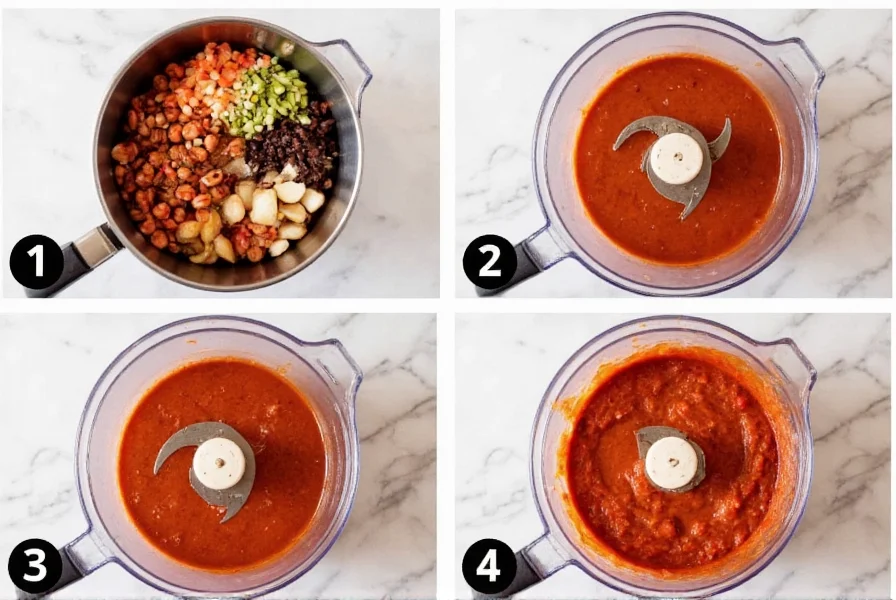Understanding chili paste varieties and applications transforms your cooking experience. This comprehensive guide explores the world of chili paste, helping home chefs and culinary enthusiasts make informed choices in their kitchen adventures.
Common Types of Chili Paste
Chili paste varieties differ significantly by region and ingredients. Recognizing these differences helps you select the right paste for specific recipes:
| Type | Origin | Key Ingredients | Heat Level | Best Uses |
|---|---|---|---|---|
| Sambal Oelek | Indonesia | Red chilies, vinegar, salt | Moderate | Stir-fries, dipping sauces, marinades |
| Gochujang | Korea | Chilies, glutinous rice, fermented soybeans, sugar | Moderate with sweetness | Bibimbap, stews, glazes, Korean barbecue |
| Harissa | Tunisia | Roasted red peppers, chilies, garlic, spices | High | Tagines, roasted vegetables, couscous, breads |
| Chili Garlic Paste | Thailand/China | Chilies, garlic, vinegar, salt | High | Asian stir-fries, noodle dishes, dipping sauces |
Practical Culinary Applications
Professional chefs and home cooks use chili paste to add depth and complexity to dishes. The concentrated nature of paste makes it superior to fresh chilies for certain applications where consistent heat distribution matters.
When incorporating chili paste into your cooking, start with small amounts and adjust to taste. The best chili paste for stir fry typically has a balanced heat profile like sambal oelek, which distributes evenly without overpowering other flavors. For slow-cooked dishes, gochujang adds wonderful umami depth that develops beautifully during cooking.
Consider these professional techniques:
- Bloom paste in hot oil first to release maximum flavor compounds
- Mix with complementary ingredients like lime juice or honey to balance heat
- Add early in cooking for integrated flavor or late for brighter, more pronounced heat
- Use as base for compound butters to elevate simple dishes

Effective Substitutions When You're Out of Chili Paste
Understanding chili paste vs chili sauce differences helps when substitutions become necessary. While sauces contain more liquid, pastes offer concentrated flavor.
If you need a chili paste substitute for Thai cooking, consider these options:
- Fresh chilies blended with a small amount of vinegar and salt (use 3:1 fresh to paste ratio)
- Crushed red pepper flakes mixed with tomato paste (1:1 ratio)
- Hot sauce with reduced liquid content (simmer to concentrate)
- Chipotle peppers in adobo sauce (for smoky alternatives)
Remember that each substitute affects the final dish differently. The ideal replacement depends on your specific recipe requirements and desired flavor profile.
Creating Homemade Chili Paste
Making your own chili paste ensures freshness and allows customization of heat levels and flavors. The basic process remains consistent across varieties:
- Select ripe, quality chilies appropriate for your desired paste type
- Remove stems and seeds for milder paste (retain for maximum heat)
- Blend with supporting ingredients like garlic, vinegar, and salt
- Adjust consistency with small amounts of liquid as needed
- Store properly to maintain freshness and safety
A simple homemade chili paste recipe starts with 1 cup fresh red chilies, 2 garlic cloves, 1 tablespoon vinegar, and 1 teaspoon salt. Blend until smooth, then store in sterilized jars. This basic formula serves as foundation for creating regional variations by adding specific spices and fermentation techniques.

Proper Storage Techniques
Correct storage extends chili paste shelf life while maintaining quality. Commercial products typically last 6-12 months unopened, but homemade versions require more careful handling.
For optimal results:
- Store opened jars in refrigerator with tight-fitting lids
- Use clean utensils to prevent contamination
- Top with thin oil layer to create protective barrier
- Freeze in ice cube trays for longer-term storage
- Check regularly for mold or off odors indicating spoilage
Understanding proper storage prevents waste and ensures your chili paste maintains peak flavor for cooking applications.
Frequently Asked Questions
What's the difference between chili paste and chili sauce?
Chili paste has thicker consistency with minimal liquid content, providing concentrated flavor and heat. Chili sauce contains more vinegar or other liquids, making it pourable. Paste works better for dishes requiring intense flavor without additional moisture, while sauce suits applications needing liquid components like marinades or dipping sauces.
Can I use chili paste instead of fresh chilies in recipes?
Yes, but adjust quantities carefully. Generally use 1 teaspoon chili paste for every 1 fresh chili. Remember that paste provides more consistent heat distribution while fresh chilies offer brighter, more variable flavor. For recipes where texture matters, like stuffed chilies, fresh remains preferable.
How can I reduce the heat of chili paste in a dish?
To reduce excessive heat, add dairy products like yogurt or coconut milk, acidic components like lime juice, or sweet elements like honey. Starchy ingredients such as rice or potatoes also help absorb some heat. Remember that heat diminishes during cooking, so wait before making final adjustments to spiciness.
Is gochujang considered a chili paste?
Yes, gochujang is a fermented Korean chili paste made from red chili powder, glutinous rice, fermented soybeans, and sweeteners. It differs from other chili pastes by having significant sweetness and umami complexity from fermentation. Its unique flavor profile makes it essential in Korean cuisine but also versatile in fusion cooking applications.
What makes sambal oelek ideal for stir-fries?
Sambal oelek's simple ingredient profile (chilies, vinegar, salt) allows its pure chili flavor to shine without competing elements. Its medium heat level provides noticeable spice without overwhelming other ingredients. The paste consistency distributes evenly in high-heat cooking, and it withstands stir-frying temperatures without breaking down, making it the best chili paste for stir fry applications.











 浙公网安备
33010002000092号
浙公网安备
33010002000092号 浙B2-20120091-4
浙B2-20120091-4